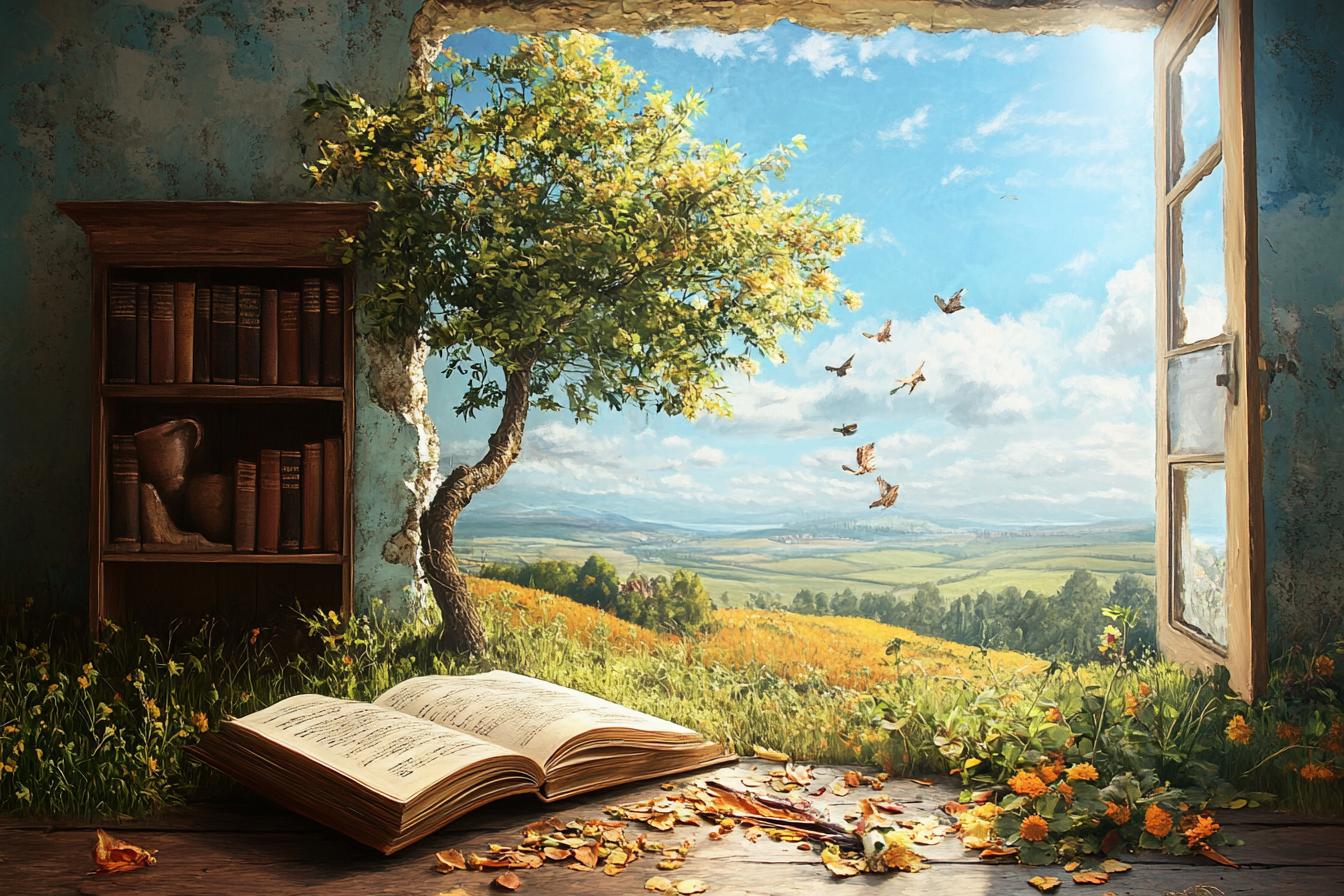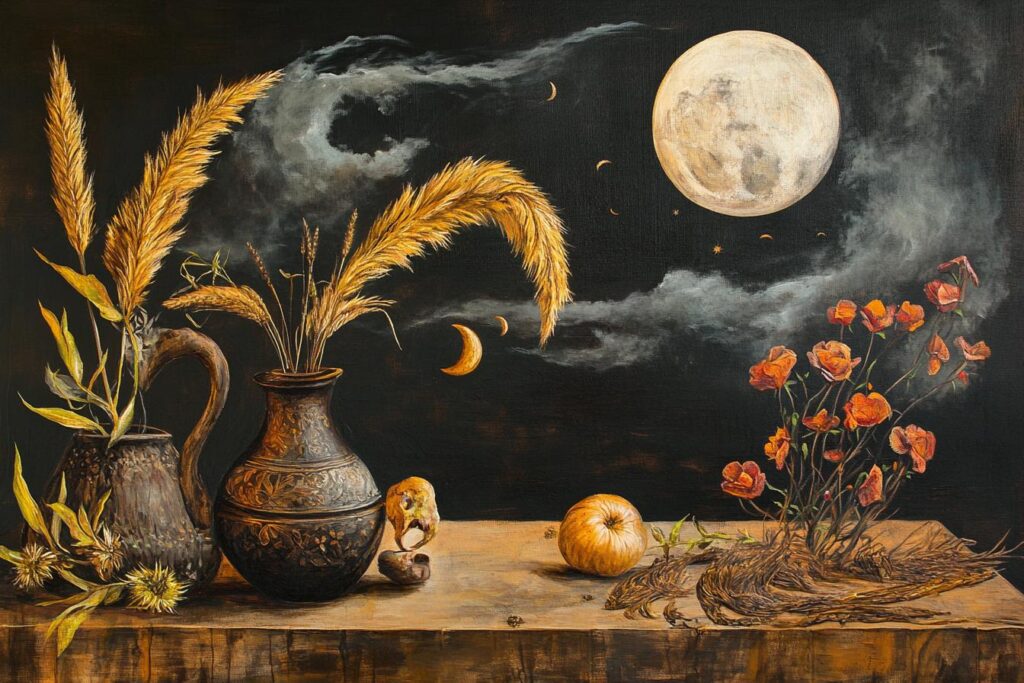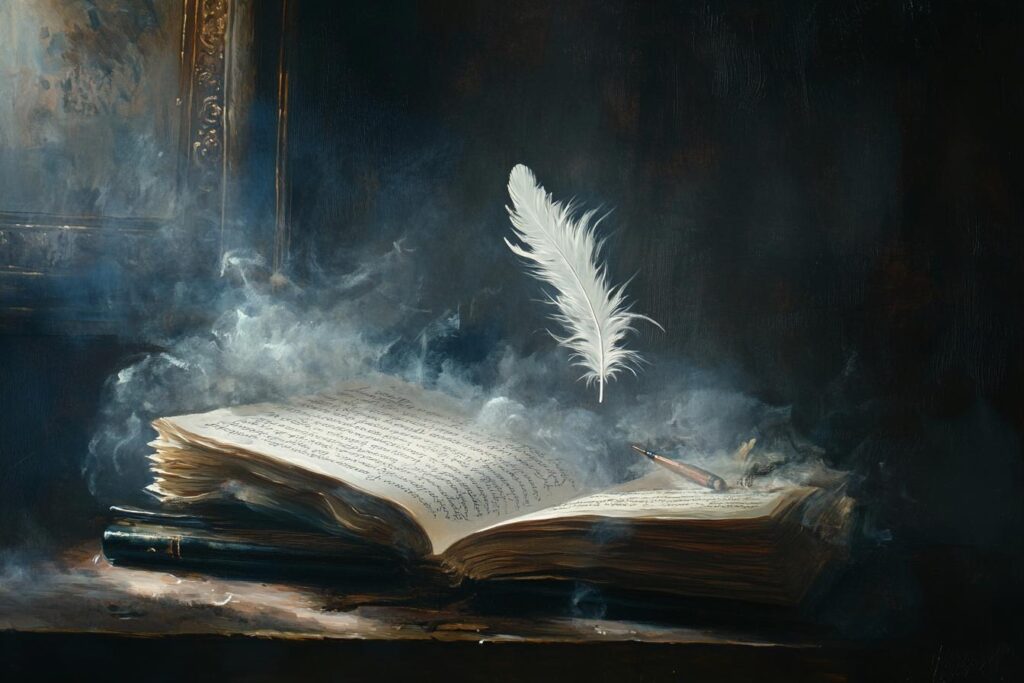Imagery in poetry is like a painter’s brushstrokes, creating vivid pictures in the reader’s mind. It’s not just about describing something, but about evoking emotions and sensory experiences. Imagine reading a poem about a stormy sea. The poet might use words like “roaring waves,” “crashing thunder,” and “salty spray” to paint a picture of the storm’s power and intensity. This imagery not only allows us to visualize the scene, but also makes us feel the storm’s force, perhaps even the fear or awe it inspires. Furthermore, it can create a deeper understanding of the poem’s themes, as the imagery often serves as a metaphor for something else, like the struggles of a character or the turmoil of a society.
Beyond visual imagery, poets also use language to appeal to other senses. You might encounter a poem that describes the “sweet scent of honeysuckle” or the “smooth, cool feel of silk.” This multisensory approach creates a richer and more immersive experience for the reader. Have you ever read a poem that made you feel like you were actually there, experiencing the sights, sounds, and smells described? That’s the power of imagery – it transports us to another world, allowing us to connect with the poem on a deeper emotional level.

1. What Is the Role of Imagery in Poetry
Imagery in poetry is like a painter’s brush, creating vivid pictures in the reader’s mind. It uses language that appeals to our senses, allowing us to experience the world through the poet’s eyes. Whether it’s the smell of freshly baked bread, the sound of crashing waves, or the feel of warm sunshine on our skin, imagery brings these experiences to life, making poems more engaging and impactful.
Beyond simply creating pictures, imagery also plays a crucial role in conveying emotions and ideas. By evoking strong sensory impressions, imagery can deepen our understanding of a poem’s themes. For example, a poem about grief might use imagery of darkness and coldness to convey the bleakness of the emotion. Or, a poem about joy might use imagery of light and warmth to express the feeling of happiness.
2. Creates vivid sensory experiences
Imagery in poetry takes the reader on a journey by painting a picture with words. It does this by appealing to the senses, allowing the reader to see, hear, smell, taste, and feel the scene the poet describes. For example, a poet might describe the “sweet scent of honeysuckle” or the “soothing sound of waves crashing on the shore.” This sensory detail pulls the reader into the poem and creates a more immersive experience.
Not only does imagery make the poem more engaging, but it also helps the reader to understand the poet’s feelings and emotions. By evoking strong sensory experiences, the poet can convey the intensity of joy, sadness, anger, or fear. Think of a poem describing a battlefield. The poet might use imagery to describe the “stench of blood and gunpowder,” the “deafening roar of cannon fire,” and the “sight of fallen soldiers.” These vivid details help the reader to understand the horror and chaos of war.
3. Elicits emotional responses
Imagery in poetry doesn’t just paint pictures; it awakens feelings. By appealing to our senses, poets create vivid experiences that resonate with our own emotions. This could be a feeling of warmth and nostalgia when describing a sunny afternoon or a sense of dread when painting a dark and stormy night. The power of imagery lies in its ability to bypass rational thought and connect directly with our emotional core.
Moreover, imagery can create empathy and understanding. By experiencing the world through the poet’s eyes, we gain a deeper understanding of their perspective and the emotions they are conveying. This allows us to connect with the poem on a personal level, even if we haven’t had the exact same experience. Ultimately, poetry’s ability to evoke emotions is what makes it such a powerful and enduring art form.
4. Deepens understanding of themes
Imagery in poetry acts as a powerful tool to delve deeper into the heart of a poem’s themes. By conjuring vivid sensory experiences, poets engage readers on an emotional level, fostering a deeper understanding of the ideas and emotions at play. For example, a poem exploring grief might use imagery of a darkened room, cold silence, and withered flowers to evoke feelings of emptiness and loss, allowing the reader to fully grasp the weight of the theme.
Furthermore, imagery can create symbolic connections, enriching the meaning of the poem. A poet might employ the image of a bird in flight to symbolize freedom, or a flickering candle to represent hope in the face of darkness. These symbolic connections go beyond literal interpretation, allowing readers to connect with the themes on a more profound level. The power of imagery lies in its ability to translate complex ideas into tangible experiences, making the themes resonate deeply within the reader’s mind and heart.
5. Makes poetry more memorable
Imagery helps readers form vivid mental pictures, making the poem more engaging and memorable. When a poet uses strong imagery, the reader experiences the poem with their senses, not just their mind. The poem becomes more than just words on a page; it transforms into a sensory experience that sticks with the reader long after they finish reading. For example, instead of simply saying “the flowers were beautiful,” a poet might use imagery to paint a picture: “The roses bloomed in a riot of color, their petals like velvet, their fragrance heavy in the air.” This type of imagery allows the reader to experience the beauty and richness of the flowers in a more visceral way, making the poem more memorable.
Furthermore, imagery helps readers connect to the poem on a deeper level. When readers are able to visualize the scenes, characters, and emotions described in a poem, they are more likely to feel empathy and understanding for the poet’s message. This connection strengthens the reader’s experience of the poem, making it more meaningful and lasting. The vivid imagery acts as a bridge between the poet and the reader, allowing them to share a common experience and understand each other’s thoughts and feelings.
6. Enhances the readers imagination
Imagery in poetry acts like a magic key, unlocking a reader’s imagination and inviting them to step into the world the poet creates. Through vivid descriptions of sights, sounds, smells, tastes, and textures, the poet paints a picture in the reader’s mind, allowing them to experience the poem’s themes and emotions on a deeper level. This immersive experience goes beyond simply understanding the words on the page; it encourages readers to actively participate in the poem’s world, filling in the gaps with their own unique interpretations and feelings.
By engaging the imagination, poetry transcends the limitations of language and allows for a more profound connection between the reader and the writer. The reader becomes a collaborator in the creative process, adding their own personal experiences and memories to the poem’s tapestry. This shared journey enriches the reading experience, leaving a lasting impression and expanding the reader’s understanding of the world around them.
Conclusions
So, there you have it! Imagery in poetry is more than just pretty words; it’s a powerful tool that brings poems to life. It helps us experience the world through the poet’s eyes, whether it’s the sting of cold rain or the sweet scent of a rose. Imagery makes us feel the poem’s emotions, understand its deeper meanings, and remember it long after we’ve finished reading. It’s like a secret handshake between the poet and the reader, sparking our imaginations and making poetry a truly unforgettable experience.

